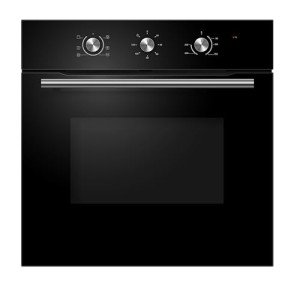The Comprehensive Guide to Built-In Ovens: A Modern Kitchen Essential
Built-in ovens have become a staple in modern kitchens, integrating aesthetic appeals, performance, and area efficiency into a single device. As house owners pursue both functionality and design, understanding the features, advantages, and factors to consider of built-in ovens can substantially improve the cooking experience. This short article dives into what built-in ovens are, their diverse types, installation factors to consider, and FAQs to assist customers make notified choices.
What is a Built-In Oven?
A built-in oven is a kitchen home appliance developed to be integrated into kitchen cabinetry, creating a streamlined, cohesive try to find the kitchen. Unlike freestanding ovens, which occupy additional floor space, built-in ovens are enclosed within wall units or cabinetry. Electric built in oven and hob packages are offered in different configurations and sizes, allowing for tailored services that deal with the requirements of varied homes.
Types of Built-In Ovens
Built-in ovens can be classified into various types based upon their features and cooking techniques. Here are a few of the most typical types:
Single Built-In Ovens
- Best for little kitchens and homes with modest cooking requirements.
- Normally have one main cooking compartment, producing a compact footprint.
Double Built-In Ovens
- Ideal for devoted cooks and larger families.
- Features 2 separate cooking compartments for flexible meal preparation.
Wall Ovens
- Installed at eye level for simple gain access to.
- These ovens typically include convection innovation for even cooking outcomes.
Steam Ovens
- Usage steam to cook food, protecting moisture and nutrients.
- Great for health-conscious individuals.
Mix Ovens
- Merge microwave and conventional oven functionalities.
- Deal versatility for quick meals and conventional baking.
Italian or European Style Ovens
- Frequently designed with special looks and advanced cooking innovations.
- Popular for high-end kitchen designs.
Advantages of Built-In Ovens
Built-in ovens offer a selection of advantages that appeal to contemporary house owners seeking both performance and looks. A few of these benefits include:
- Space Efficiency: Built-in ovens save important counter area, which is especially helpful in smaller sized cooking areas.
- Boosted Aesthetics: With a customized look, built-in ovens boost the overall design of the kitchen while offering a seamless combination with cabinets.
- Versatile Cooking Capacity: Available in numerous sizes, these ovens cater to the cooking requirements of various households, from single occupants to large families.
- Ease of access: The setup at eye level makes built-in ovens simpler to access, decreasing the danger of spills or injuries when placing or eliminating hot dishes.
- Lower Energy Consumption: Many built-in ovens come with energy-efficient modes that help decrease electric consumption over time.
Installation Considerations
Setting up a built-in oven requires mindful planning and factor to consider. Here are some factors to keep in mind:
- Dimensions: Before purchasing a built-in oven, measure the area offered to ensure a correct fit. Built-in ovens can be found in particular standard sizes, so it is crucial to choose the ideal one.
- Ventilation: Adequate ventilation is required for effective operation. Make sure there is a correct exhaust system that abides by local building codes to avoid getting too hot.
- Electrical Requirements: Built-in ovens may require specific electric outlets or circuitry. Talk to a certified electrical expert to make sure that the installation adheres to safety standards.
- Expert Installation: Although some homeowners choose DIY installation, hiring an expert can help make sure safety and correct installation for ideal efficiency.
Upkeep Tips for Built-In Ovens
Preserving your built-in oven not just lengthens its life-span but also guarantees effective operation. Here are some essential maintenance pointers:
Regular Cleaning:
- Wipe down interior surfaces after each use to prevent accumulation.
- Usage vinegar and baking soda for non-toxic cleansing.
Inspect Seals:
- Inspect the door seals to prevent heat loss.
- Change worn-out seals without delay.
Test Thermostat:
- Periodically inspect the temperature level accuracy with an oven thermometer. Change settings as essential.
Service Annually:
- Schedule professional upkeep once a year to inspect electrical elements and make sure safe operation.
| Upkeep Task | Frequency | Purpose |
|---|---|---|
| Tidy interior | After each usage | Prevent buildup and odors |
| Examine seals | Regular monthly | Guarantee no heat leaves |
| Test thermostat | Every 6 months | Examine temperature level accuracy |
| Professional service | Annually | Guarantee ideal efficiency |
Frequently Asked Questions About Built-In Ovens
1. Do built-in ovens can be found in various sizes?Yes, built-in ovens are available in different sizes to fit different kitchen setups and culinary requirements. It is vital to measure the readily available space before acquiring. 2. Can built-in ovens be utilized as regular ovens?Absolutely. Built-in ovens operate like regular ovens,
allowing you to bake, broil, and prepare a variety of dishes. 3. Are built-in ovens energy-efficient? Many built-in ovens featured energy-saving features and are designed to use less
electrical energy than freestanding designs. 4. The length of time does setup take?Installation time can differ based on intricacy but generally ranges from 1 to 3 hours. It is advisable to employ an expert for optimum results. 5. What is the life-span of a built-in oven?With proper maintenance, built-in ovens can last anywhere from 10 to 15 years or longer.
Built-in ovens use a plethora of advantages for modern-day families, integrating convenience, energy effectiveness, and stylish style into one service.
When picking and setting up a built-in oven, it's essential to consider the type that best fits your cooking practices, offered space, and visual preferences. By comprehending the benefits, installation requirements, and upkeep needed, homeowners can elevate their cooking experience and produce sensational kitchen areas that impress both family and guests alike. Purchasing a built-in oven can be an advantageous addition that streamlines cooking, boosts home value, and savors cooking delights for years to come.

